Buying leather shouldn’t feel like a gamble. In the next five minutes you’ll know exactly why full-grain ages like fine wine, when top-grain is the smarter buy and how to dodge marketing fluff like “genuine leather”. Scroll once and shop with confidence.

An Overview Guide to Leather Grades; Types of Leather.
Leather is a material loved by many for its flexibility and durability. It is made from tanning animal skins or hides, and many different animals are used to make leather. Leather has four basic grains or qualities: full-grain leather, top-grain leather, genuine leather, and corrected-grain leather.
Full-Grain Leather Is the Best Quality
Full-grain leather is characterized by its luxurious, smooth surface, and it has few, if any, flaws. It is the most popular type of leather. It has not been snuffed, sanded, or buffed to remove any natural marks or imperfections from its surface. Its fibers are stable and durable because the grain has not been removed. There is less moisture in the leather from prolonged contact as the grain is characteristic of breathing. This type of leather does not wear out easily. Instead, it develops a patina, which is a thin layer that protects the leather from damage from wearing or corroding; it also gives the leather an aesthetic look. It is used in making high-quality footwear and furniture.
It has two finished product types; Aniline and semi-aniline. Aniline leather is the most desirable finish in the manufacture of leather. It is exclusively dyed using soluble dyes without covering the top with insoluble pigment or topcoat paint. Semi-aniline has a thin protective coat, which protects it from staining and wearing out.
Top-Grain Leather Is the Most Common
Top-grain leather has the second-highest leather quality of the high-end category of leather products. It is more pliable and thinner as its layer is separated away. Its surface is sanded, and a finish coat is added to make it less breathable with a plastic feel, making it seem cooler. Also, it develops a patina that protects it from damage and corrosion, making it last longer. It has better stain resistance and is less expensive than full-grain leather. Many people prefer this type of leather as it is durable and readily available.
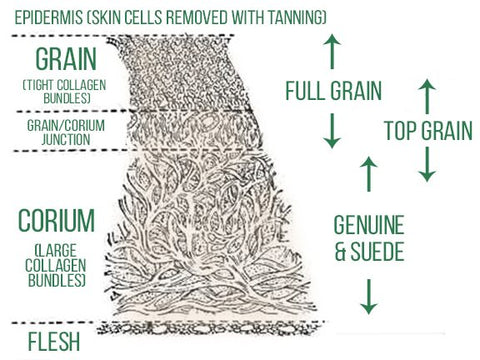
Genuine Leather Is Not a Statement about its Authenticity
Genuine leather is made from real leather. In a class of real leather products, genuine leather products are the lowest in quality. These products are made from leftover leather after the high-end products are made. The products manufactured from it do not look or feel as pleasing compared to those made from high-quality leather. Likewise, products made from genuine leather only last for a short time before they wear out. However, most people can afford this type of leather product as they are widely available.
Corrected-Grain Leather Has Corrected Imperfections
Corrected-grain leather is also referred to as the lesser-known grain. It is a special type of leather that is corrected and fixed by experienced leatherworkers to improve its functionality and aesthetic qualities. Hides used in making it do not meet the required standards in making aniline and vegetable-tanned leather. An artificial grain has been embossed on the top and dressed out using dyes and stains. Imperfections are usually sanded off and then corrected. Corrected grain is used to make pigmented leather. This type of leather is usually readily available in stores and is more affordable.
CP Slippers Luxe collection is made from a single piece of Napa leather, which is then handcrafted and sewn to perfection for your feet’s comfort. In our next installment, we will introduce our readers to the art of vegetable tanning and answer the oft-asked question, “Is it Vegan?”

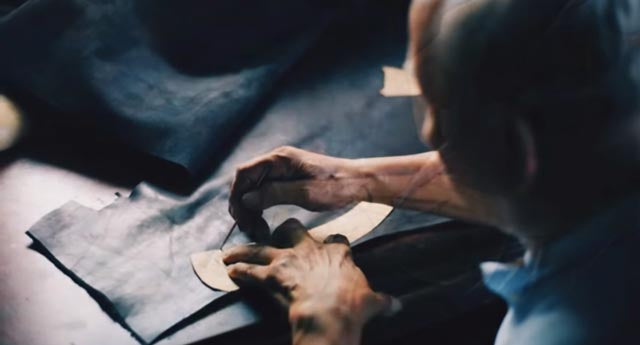

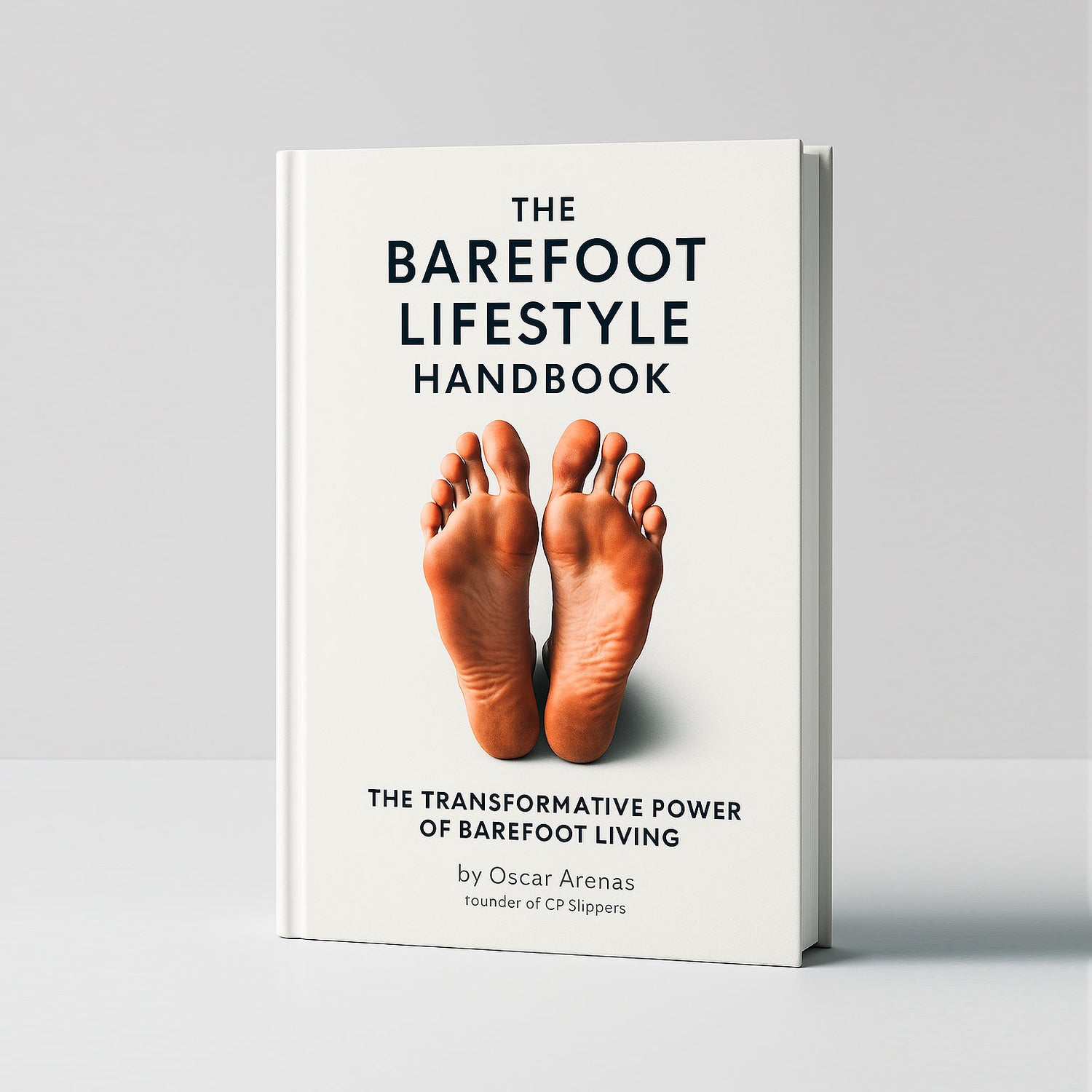
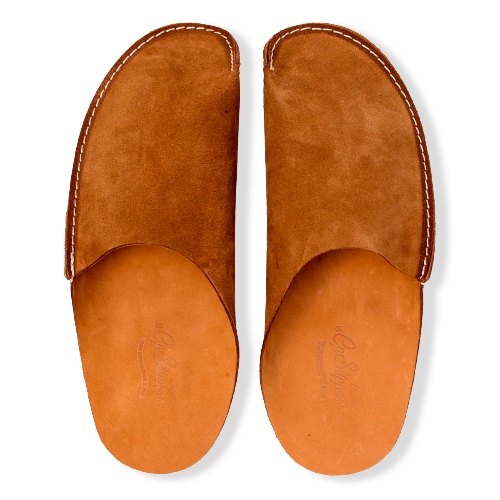
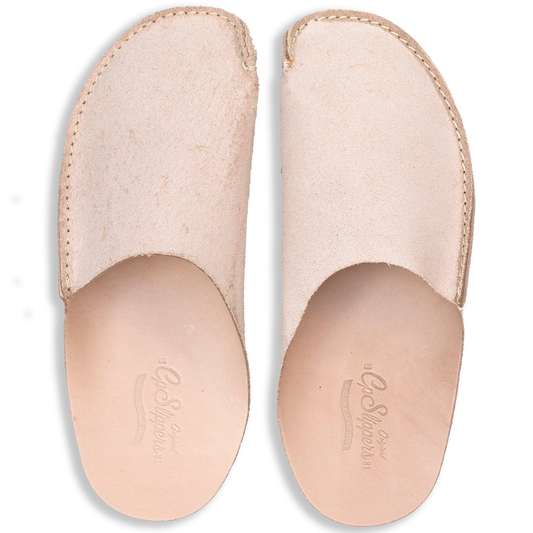
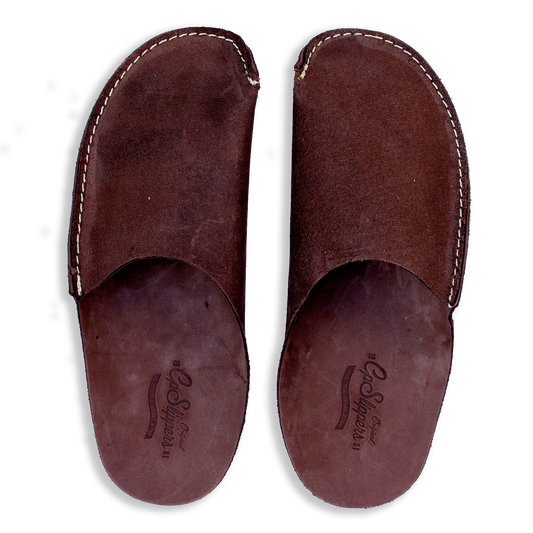
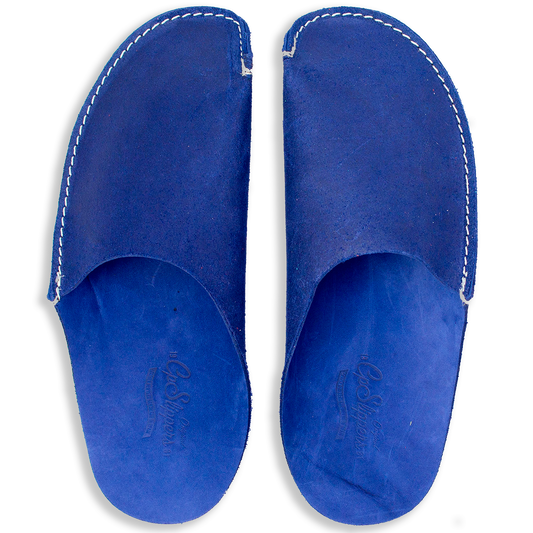
34 comments
Thank God for an honest person! I love everything leather and all the misinformation is hugely confusing. If you can share more about leather furniture, I will be ever grateful. I spent $1,000 on a leather couch that is showing a much lighter color in areas of high use after just 5 years. When I replace it, I want leather that will last 15-20 years. How do I find that??
Hey Mike, Thanks so much for your storytelling :) I learned sooooo much; you actually gave me a lot of insights as I’m new in the leather industry and wanting to deliver the highest quality of it to my clients. Blessings to you!
Please give me an idea about which leather is best for making leather handbags, laptop bags and office bags.
This is actually untrue. These aren’t grades used by anyone tanning leather or any major manufacturer in the leather industry.
The story of genuine leather is an interesting one. But it’s a long one with a bunch of different facets…don’t say I didn’t warn you.
The idea that “Genuine is a grade of leather (the 2nd worse one)” is the biggest ‘leather myth" on the internet today. Simply put it just means real. A distinguisher from synthetic. It shouldn’t be taken to mean “good” or “bad.”
Let’s get into how “genuine always=bad” came to be and why it’s still wrong: So back in the day “Genuine Leather” got stamped on all sorts of “good” leather goods. Here’s a packaging tag from my company from the 70’s and 80’s It was a selling point, but as cheap imported goods got more and more common, less than honest companies asked themselves “what’s the cheapest leather that’s still technically ‘genuine’?” Enter: The finished split. A finished split is basically suede that’s covered in either a sheet or PU or a heavy pigment layer. The goal is to make suede look like top/full grain: smooth. The problem with this is that it’s the equivalent of trying to make a smooth dance floor by painting or laying vinyl flooring over shag carpet. With use the outer layer breaks down and you have a mess. Cheap leather goods manufacturers started stamping “Genuine Leather” on things made with finished splits to the extent that much of the leather goods you’d find would be low quality and stamped “genuine leather”…you have to remember this was the 80’s and 90’s people were not as willing back then to drop $50 or $100 on a wallet like today, you just couldn’t find very many quality leather goods outside of smaller makers.
One take home from what happened with genuine leather is that unethical manufactures/tanneries will take whatever buzzword is taken by people as the shortcut for quality and capitalize on it. For example: full grain just means “nothing has been done to alter the outer grain” that means a tannery can actually do less to a leather and it’s still “technically full grain.” Which is why you can’t count on “full grain” alone to be a sign of quality.
There are many exceptions to the “Genuine=Bad” rule. The biggest one is Red Wing Heritage. They’re stamping “Genuine Leather” on the veg-tan sole of Beckmans and other shoes. They are using it “Genuinely” just to mean real. I’ve also noticed that many global and European brands also use it: $3000 Dior Homme Leather Jackets, Article Furniture uses genuine in it’s short descriptions for their full grain aniline Italian leather. Apple’s “official” cases are decent leather but are called “Genuine Leather” in the descriptions. Search “Genuine Leather” on Kickstarter and you’ll notice that many projects that are obviously using decent leather from France, Spain, Italy and other parts of Europe use it to describe what they use (probably just a translation thing.)
The origin of Genuine (and the rest of these terms) as grades
Calling genuine leather a grade of leather is probably one of the worst misconceptions to plague my industry. It’s forced my Dad, a 70 leatherworker who’s worked with leather most of his life, to have to take it out of his vocabulary when he talks to uninformed customers. Many smaller leather companies, my own included, have had to remove the word from our websites for fear of people getting confused.
This all started with a video and related article where a big leather goods manufacture broke down some “grades of leather” in a very slanted and misleading way. This video went viral. These “facts” got repeated everywhere and now several times a week someone here on Reddit says “genuine is the second worst grade of leather.” Some newer companies have even repeated this nonsense breakdown in their product descriptions. Genuine has never been a grade, you can’t call up a butcher and ask for just real beef. You can’t call up a tannery and ask for “genuine leather” the term is just too broad, there are so many other words used in our industry to describe leather.
This entire “grading system” isn’t used by any government, majory tannery trade group, or regulating authority anywhere: it is completely made up.
So was this misrepresentation of facts on purpose?
You bet ya. If these articles had simply said “genuine sometimes means”, I’d have no problem, but they go so far as to claim it’s some sort if secret “industry term” which is wrong. Industry terms are specific; sometimes so specific that they aren’t understood by those outside the industry. Genuine leather is such a broad term and that it’s useless as a specific descriptor. So it’s hard to see those statements as anything but a malicious misrepresentation of facts to pump up the product. It caught on because it’s got this “click-baity”, you think it means ‘x’ but it really means this ring to it. Kind of like the “USA is a city in Japan” urban legend
Lastly, I’ll tell you: I get weekly emails from less expensive tanneries all the time and they never use the word genuine. They use real, full grain, veg-tan…plus a whole bunch of real industry terms that I won’t get into here.